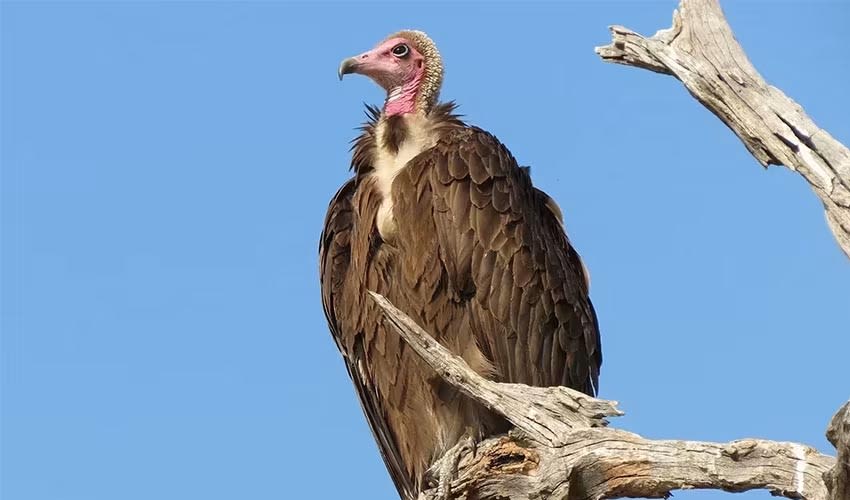The Hooded Vulture is a bird of prey that performs a critical function in maintaining the health of its habitat. Endemic to Sub-Saharan Africa, it is the smallest of the region’s vultures, which perhaps contributes to its lesser-known status compared to its larger relatives.
The ‘hood’ of the Hooded Vulture, from which it gets its name, is a layer of short, downy feathers that covers its head and neck, creating a distinctive ‘hooded’ appearance. This, along with its bare, wrinkled head, not only gives it a unique, if somewhat intimidating appearance but also is highly functional. The lack of feathers on the head is an evolutionary adaptation to its scavenging lifestyle; it helps keep the bird clean as it delves into carcasses.
Contrary to popular belief, the Hooded Vulture has a relatively good sense of smell, which is unusual for Old World vultures. This sense allows them to detect carrion over large distances. Their hooked beaks are not as robust as those of larger scavengers, but they are perfectly adapted to tear into the softer parts of carcasses that other predators might leave behind. This makes the Hooded Vulture an important part of the cleanup crew of the wild, picking up after larger carnivores and other scavengers have had their fill.
The ecological role of the Hooded Vulture cannot be overstated. By consuming dead animals, they help to prevent the spread of diseases such as anthrax and botulism that can affect wildlife and sometimes even human populations. They are, therefore, not just scavengers but also sanitary workers of the natural world.
Distribution
 Angola
Angola Benin
Benin Botswana
Botswana Burkina Faso
Burkina Faso Burundi
Burundi Cameroon
Cameroon Central Af. Rep.
Central Af. Rep. Chad
Chad Côte D’ivoire
Côte D’ivoire DR Congo (Kinshasa)
DR Congo (Kinshasa) Djibouti
Djibouti Eritrea
Eritrea Eswatini
Eswatini Ethiopia
Ethiopia Gambia
Gambia Ghana
Ghana Guinea-Bissau
Guinea-Bissau Guinea
Guinea Kenya
Kenya Liberia
Liberia Malawi
Malawi Mali
Mali Mauritania
Mauritania Morocco
Morocco Mozambique
Mozambique Namibia
Namibia Niger
Niger Nigeria
Nigeria Rwanda
Rwanda Senegal
Senegal Sierra Leone
Sierra Leone Somalia
Somalia South Africa
South Africa South Sudan
South Sudan Sudan
Sudan Tanzania
Tanzania Togo
Togo Uganda
Uganda Zambia
Zambia Zimbabwe
ZimbabweAnything we've missed?
Help us improve this page by suggesting edits. Glory never dies!
Suggest an editGet to know me
Terrestrial / Aquatic
Altricial / Precocial
Polygamous / Monogamous
Dimorphic / Monomorphic (size)
Active: Diurnal / Nocturnal
Social behavior: Solitary / Pack / Herd
Diet: Carnivore / Herbivore / Omnivore / Piscivorous / Insectivore
Migratory: Yes / No
Domesticated: Yes / No
Dangerous: Yes / No




